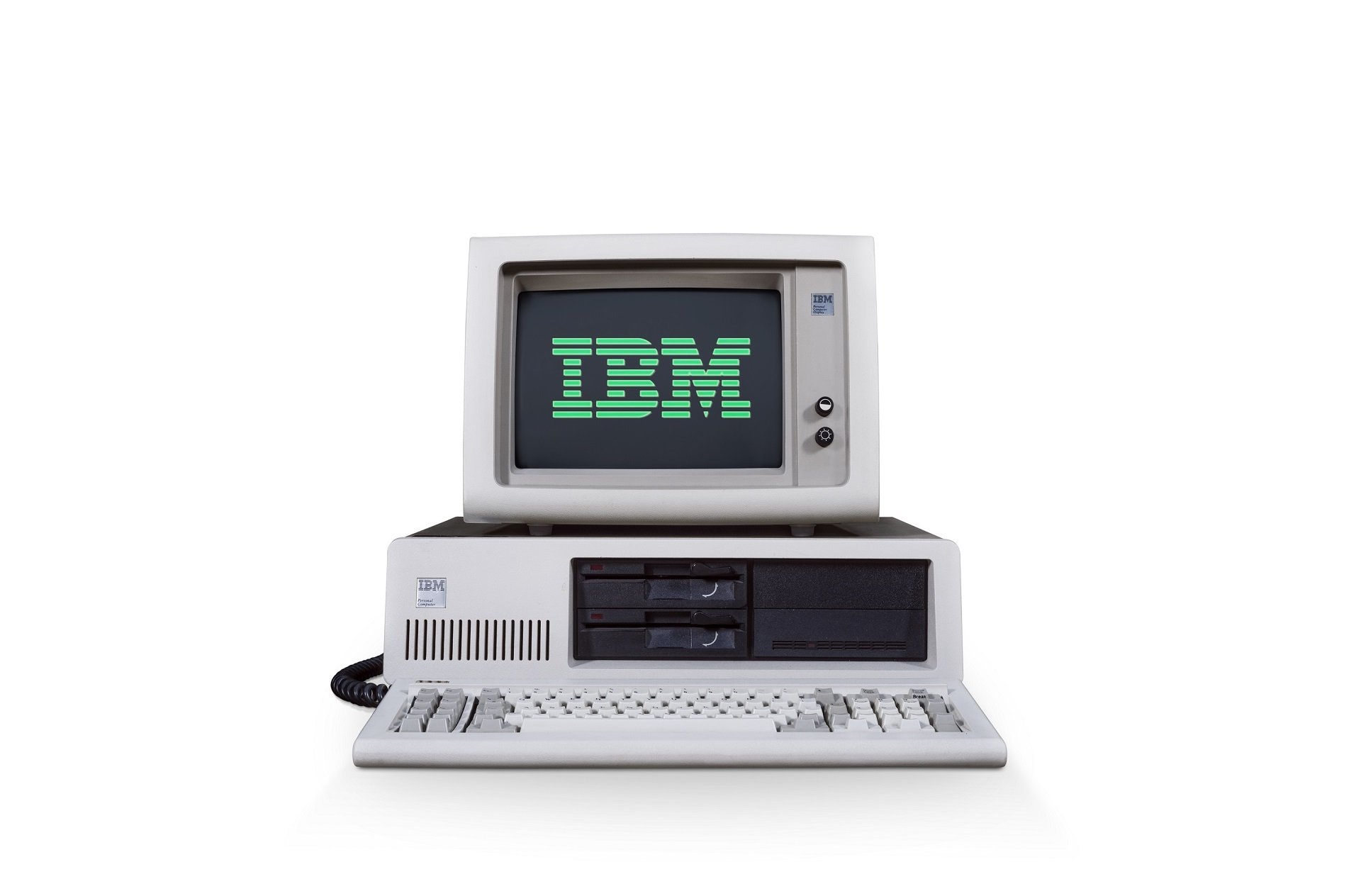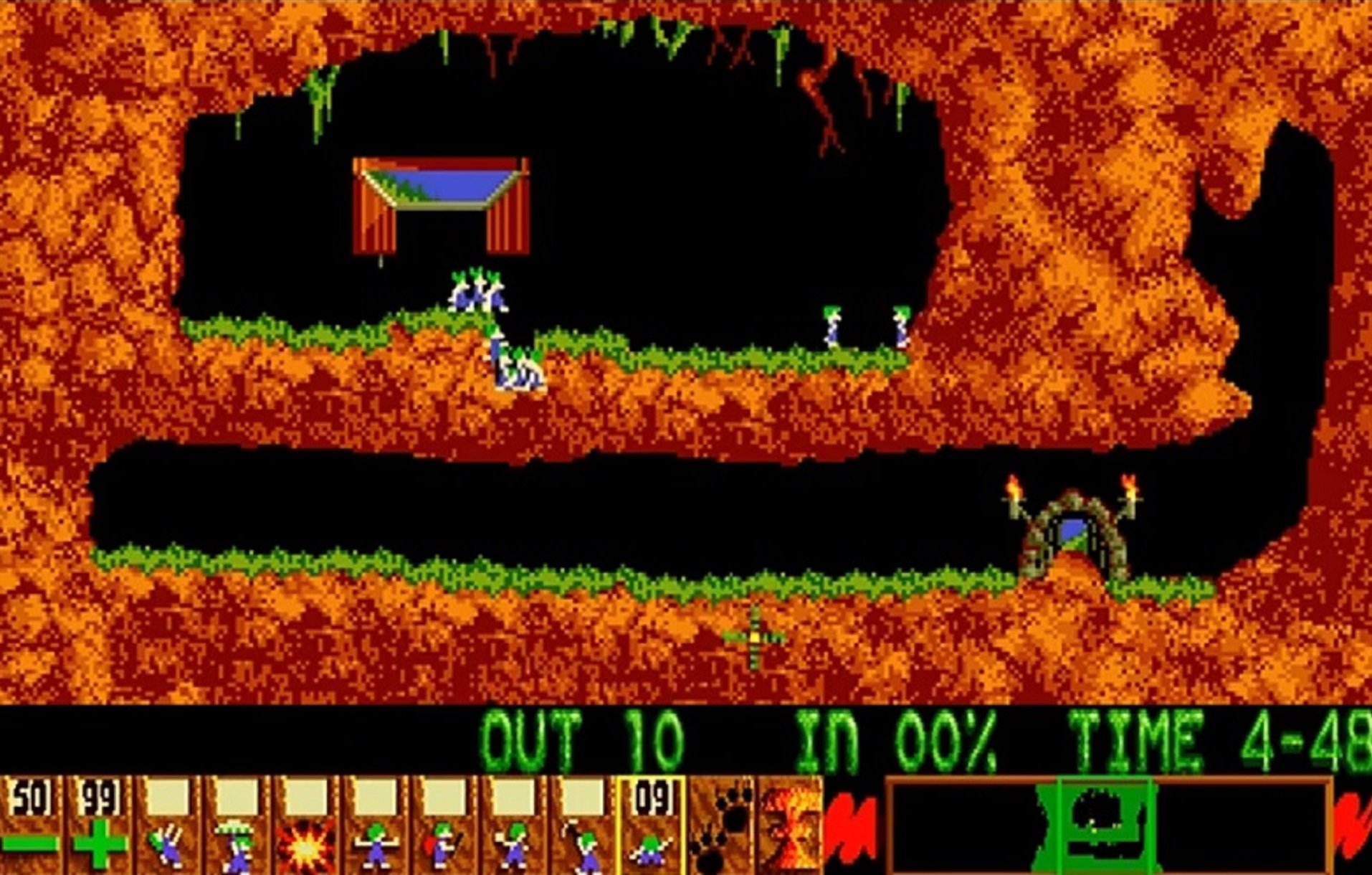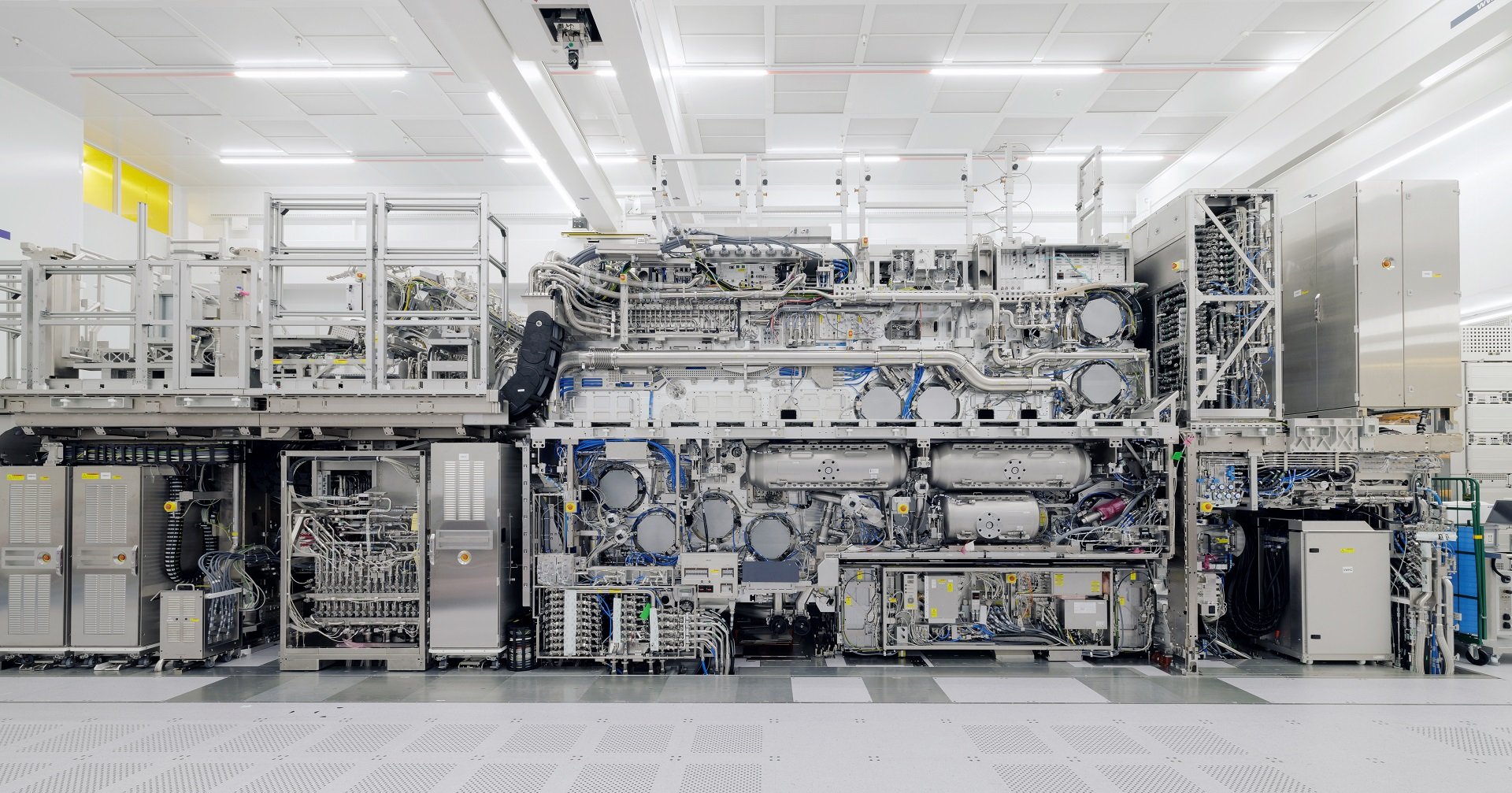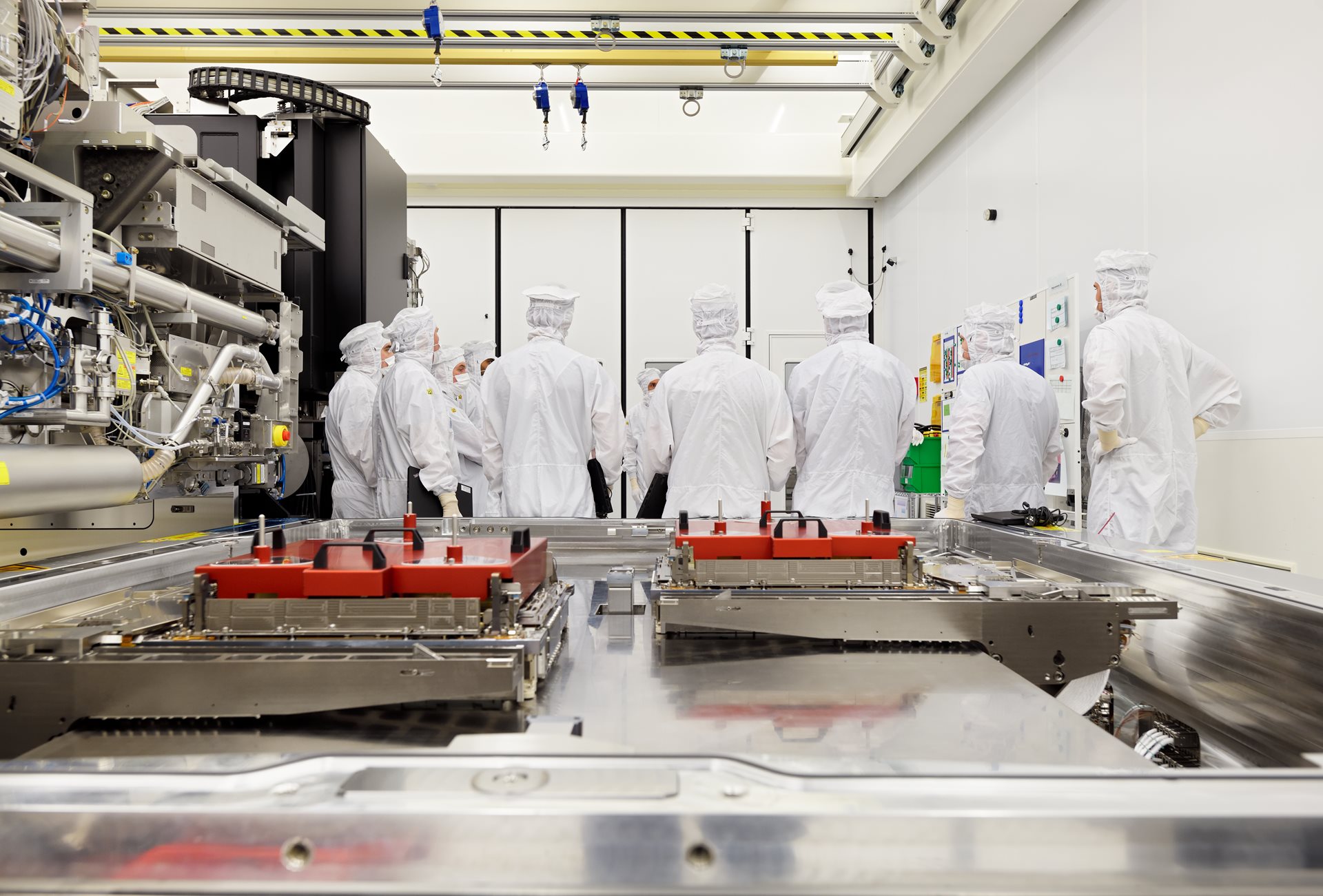5-minute read - by Alison Li, March 6, 2024
Travel back to a time when floppy disks unlocked the digital realms and pixelated adventures on personal computers redefined play.
As we celebrate our 40th anniversary at ASML, we’re honoring pioneering electronic devices and the tiny silicon brains that powered them. They first entered many people’s daily lives in the 1980s, the era that saw microchips transform from industrial components to the heartbeats of home computing. Read on to find out how the IBM PC ignited the home computing revolution, the Commodore Amiga opened up new frontiers in computer graphics, and the Yamaha DX7 brought a new wave of music production that still echoes today.
IBM released its first personal computer in 1981, called the IBM PC. After witnessing the growing market interest in personal computers, the company embarked on an ambitious project to create a computer that was affordable, user-friendly and versatile. The result? A game-changing innovation that’s widely recognized for popularizing the term 'PC' today.
One factor that cemented the IBM PC’s status as the standard for personal computing was its open architecture. While its competitors produced their own proprietary systems, IBM chose to make the technical specifications of its PC available to the public.

IBM’s transparency allowed manufacturers to freely build hardware and software that could operate smoothly with its products. Furthermore, compatibility among computer manufacturers ensured that a diverse ecosystem of hardware and software would develop around the IBM PC standard. This intensified competition and lowered the prices of add-ons across the PC market, significantly reducing costs for PC consumers and driving the mass adoption of PCs worldwide.
In addition, the IBM PC used off-the-shelf parts – mass-produced components that could be readily purchased from suppliers. Companies raced to reverse-engineer the IBM PC’s designs and built compatible PCs without violating copyrights. These clone PCs often replicated the IBM PC’s architecture at a much friendlier price point, making personal computers more accessible to a wider audience.
IBM chose the Intel 8088 microchip over the 8086 for its first PC because it offered the best of both worlds. Featuring a 16-bit internal processing power with an 8-bit external data bus, it was compatible with cheaper, widely available 8-bit components at the time. This choice reduced manufacturing costs and ensured that the PC could be produced in large quantities due to the 8088’s higher availability and maturity in the market. How’s that for cost-effectiveness?
Released in 1985, the Commodore Amiga was known for revolutionizing the landscape of creative computing. A multimedia powerhouse, the Amiga stood out as not only a platform for playing video games, but also a potent tool for graphic design. It boasted a robust graphics engine powered by its custom chipset with several coprocessors to handle audio, video and direct memory access independently of the Central Processing Unit (CPU).
This chipset made the Amiga capable of delivering high-resolution images in a broad spectrum of colors. Impressively, the Amiga supported modes that could display up to 4,096 colors at the same time. Think detailed digital art and a dynamic visual experience that could transport you to a world of its own.
At the heart of the Commodore Amiga was the Motorola 68000 CPU. As one of the first widely available processors with a 32-bit instruction set, large unsegmented address space and relatively high speed for the era, the 68000 was popular throughout the 1980s. It was widely used in a new generation of personal computers with graphical user interfaces, including the Macintosh 128K, Commodore Amiga, Atari ST and Sharp X68000. The 1988 Sega Genesis/Mega Drive console was also powered by a 68000.
In the Amiga, the Motorola 68000 worked in tandem with a custom chipset to deliver the computer’s remarkable graphics capabilities. By offloading graphics tasks to the custom chipset, the Motorola 68000 could ensure that the Amiga ran smoothly even when complex graphics were being rendered.
This division of labor between the CPU and the custom chips enabled the Amiga to perform computationally intensive graphics functions such as animation and video playback. Developers and graphic designers could then wield these tools to take video game production far beyond what was conventionally possible. Examples include the engaging level design and sophisticated visuals embedded in games such as ‘Shadow of the Beast’ and ‘Lemmings’ that still captivate audiences worldwide today.

Digital synthesizers overtook their analog counterparts and gained enormous popularity in the 1980s. The Yamaha DX7 was one of the first digital synthesizers to become commercially successful.
Analog synthesizers made music by shaping electrical signals using oscillators, filters and modulators to produce various tones and timbres. Because of their analog components, these devices could suffer from temperature-induced tuning instability. They also lacked preset memory, which meant artists needed to manually configure settings for each sound.
In contrast, digital synthesizers generated sound via digital signal processing (DSP). They used frequency modulation (FM) synthesis, where the shapes of sound signals – known as waveforms – were modified to create new sounds. This solved many of the problems with analog synthesizers. Digital synthesizers could be controlled digitally, create a wider range of distinctive tones and, crucially, play multiple notes simultaneously.
According to MusicRadar, the "spiky" and "crystalline" sounds from digital synthesizers made them "the perfect antidote to a decade of analog waveforms." The Yamaha DX7 became ubiquitous after its release in 1983 . Within three years you could hear it at the top of the Billboard charts in famous hits including ‘Into the Groove’ by Madonna and ‘Saving All My Love For You’ by Whitney Houston. So, the next time you listen to these classics, don’t forget to tune your ears to the Yamaha DX7’s unique charm.
Two Yamaha chips were at the DX7’s core. The YM21290 was instrumental in generating the frequency and envelope amplitude data. On the other hand, the YM21280 utilized this data to create the tones, manipulating waveforms to produce a broad range of timbres. Together, these chips gave the DX7 its signature sounds, from realistic imitations of pianos to lifelike recreations of strings and brass.

Powering microchip technology forward with you
The pioneering products of the 1980s and the microchips that powered them did more than just shape the culture of their day. They also sparked the imagination for a future filled with technological possibilities. It’s this quest for ever-greater computing power and drive for progress that inspires us to continuously push technology to new limits at ASML.
Together with our customers, suppliers and partners, we’re committed to powering microchip technology forward and enabling the next wave of innovation.
Learn more about our advanced lithography solutions.




